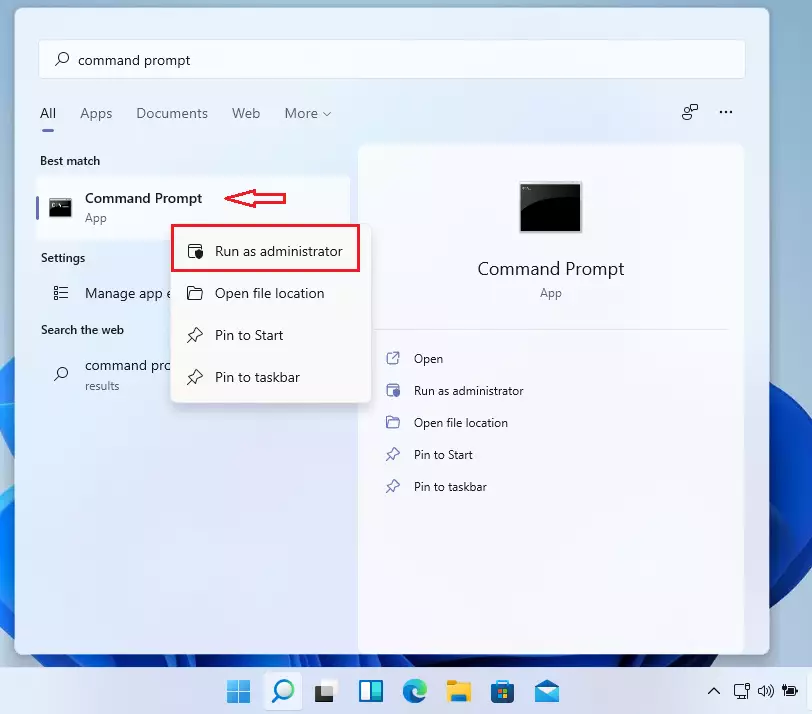This brief tutorial shows students and new users how to install Windows Subsystem for Linux (WSL) on Windows 11.
There are many reasons why someone might want to install Windows Subsystem for Linux (WSL) on Windows 11.
One of the biggest advantages of WSL is that it enables developers to run a GNU/Linux environment, including most command-line tools, utilities, and applications directly in Windows, without setting up a virtual machine or dual-boot. This can be especially useful for those who need to work with Linux-based tools and software but prefer to use Windows as their primary operating system.
Additionally, WSL2 is built with a new architecture that delivers features that make it an amazing way to run a Linux environment in Windows. It has a performance boost and full system call compatibility, making it a great option for those who need to run Linux-based applications on Windows.
Overall, installing WSL on Windows 11 can provide users access to a wide range of Linux-based tools and software without switching to a Linux-based operating system.
When you’re you’ve enabled WSL on Windows 11, follow the steps below:
Install Windows Subsystem for Linux
To enable WSL in Windows, you will want to open the Command Prompt terminal as administrator. Click on Start, then begin typing Command Prompt.
Next, right-click the Command Prompt app and choose to Run as administrator.

When the console opens, run the commands below:
wsl --install
Wait for WSL 2 to be installed.
After installing, you should get a success message similar to the lines below:
Installing: Virtual Machine Platform Virtual Machine Platform has been installed. Installing: Windows Subsystem for Linux Windows Subsystem for Linux has been installed. Downloading: WSL Kernel Installing: WSL Kernel WSL Kernel has been installed. Downloading: GUI App Support Installing: GUI App Support GUI App Support has been installed. Downloading: Ubuntu The requested operation is successful. Changes will not be effective until the system is rebooted.
Restart your computer.
WSL should be installed and ready to use. When you want to update, simply run the commands below:
wsl --update
Install Specific Linux distro
Now that WSL is installed, you can install your own Linux distro. To list the available distributions to install, simply run the commands below:
wsl --list --online
You should then see all available distributions that can be installed on WSL.
NAME FRIENDLY NAME Ubuntu Ubuntu Debian Debian GNU/Linux kali-linux Kali Linux Rolling openSUSE-42 openSUSE Leap 42 SLES-12 SUSE Linux Enterprise Server v12 Ubuntu-16.04 Ubuntu 16.04 LTS Ubuntu-18.04 Ubuntu 18.04 LTS Ubuntu-20.04 Ubuntu 20.04 LTS
To install a Linux distribution from the list above, simply run the commands below using the distribution name. For example, to install Ubuntu 20.04, run the commands below:
wsl --install -d ubuntu-20.04
You should then get a message that the distribution is installed.
Downloading: Ubuntu 20.04 LTS Installing: Ubuntu 20.04 LTS Ubuntu 20.04 LTS has been installed. Launching Ubuntu 20.04 LTS.
After installing, you should get a Ubuntu command console with setup details.
Installing, this may take a few minutes.
Please create a default UNIX user account. The username does not need to match your Windows username.
For more information visit: https://aka.ms/wslusers
Enter new UNIX username: Richard
New password:
Retype new password:
passwd: password updated successfully
Installation successful!
To run a command as administrator (user "root"), use "sudo <command>".
See "man sudo_root" for details.
Welcome to Ubuntu 20.04 LTS (GNU/Linux 4.4.0-22000-Microsoft x86_64)
Some troubleshooting commands to run when you run into issues.
wsl --set-default-version 1 bcdedit /set hypervisorlaunchtype auto start
Conclusion:
- Installing Windows Subsystem for Linux (WSL) on Windows 11 allows seamless access to Linux-based tools and applications directly from your Windows environment.
- WSL2 offers improved performance and compatibility, making it an ideal solution for developers and power users.
- Users can easily install various Linux distributions to suit their specific needs and preferences.
- Running WSL enhances productivity by eliminating the need for virtual machines or dual-boot setups.
- Regular updates can be managed through simple command-line instructions, ensuring users always have the latest features and security improvements.

Leave a Reply